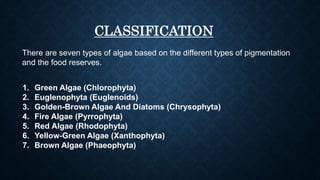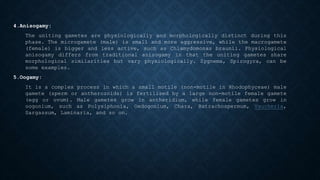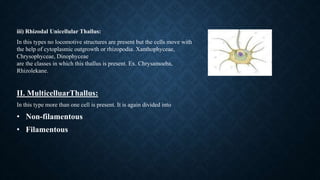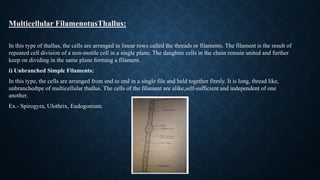Algae are primarily aquatic, photosynthetic organisms characterized by their lack of true roots, stems, and leaves, classified mainly in the kingdoms Monera and Protista. They reproduce through both asexual and sexual methods, with various forms of nutrition, and exist in diverse habitats including freshwater and marine environments. Algae are further grouped into divisions such as green algae, red algae, and brown algae based on their pigment and structural characteristics.





























